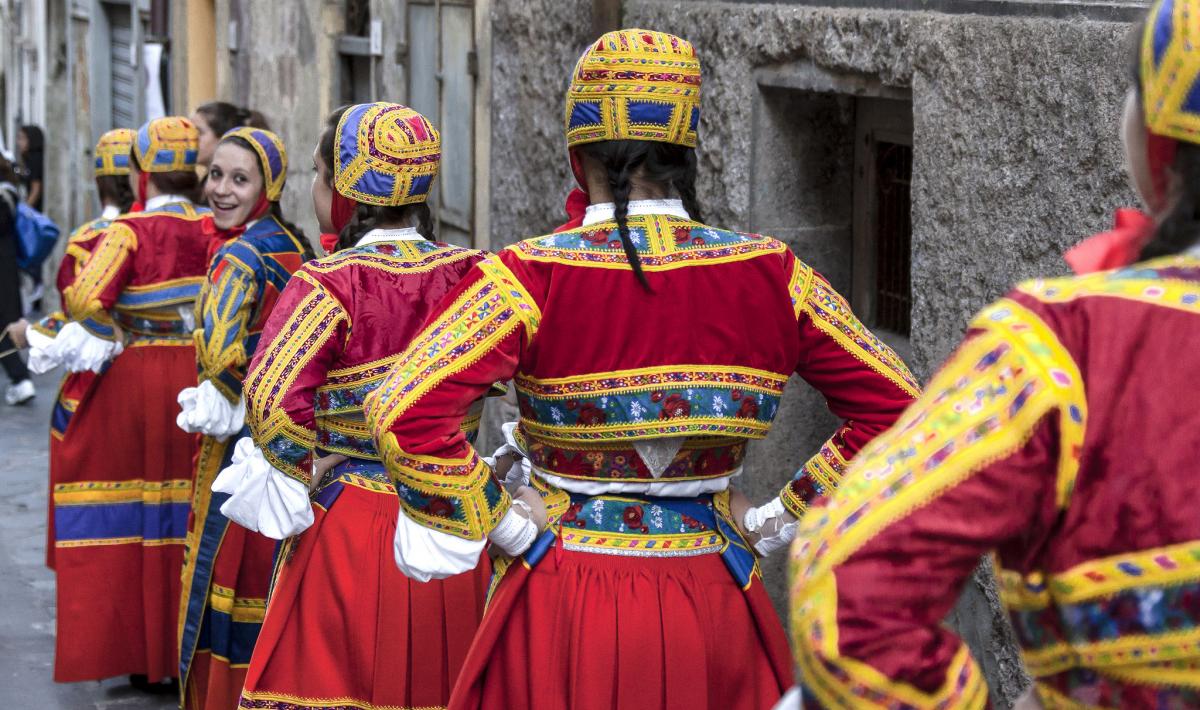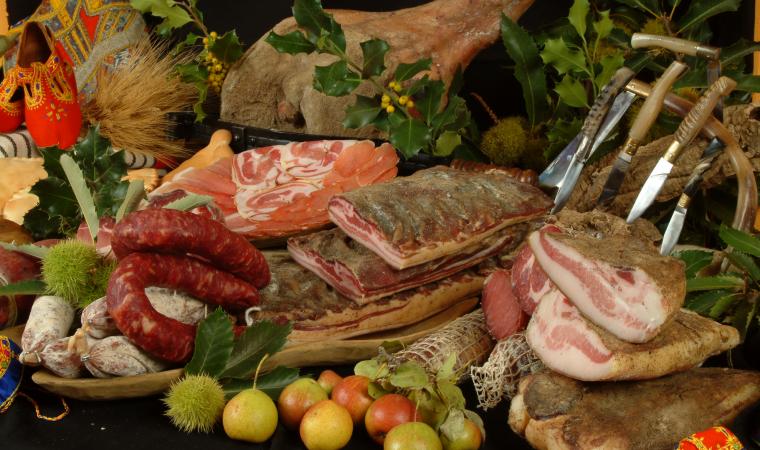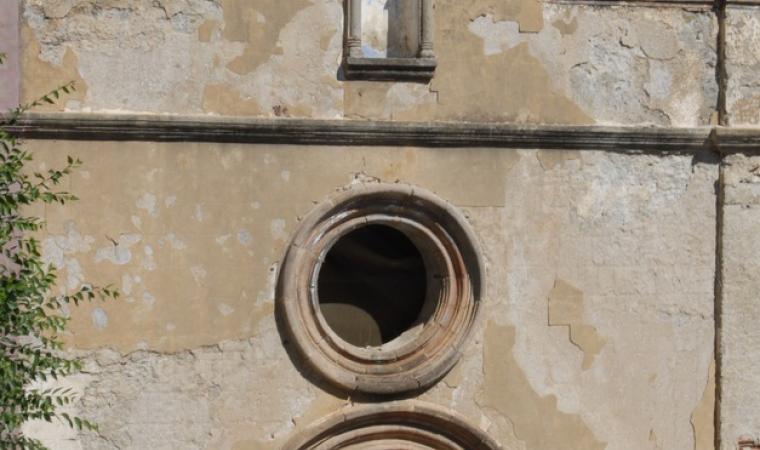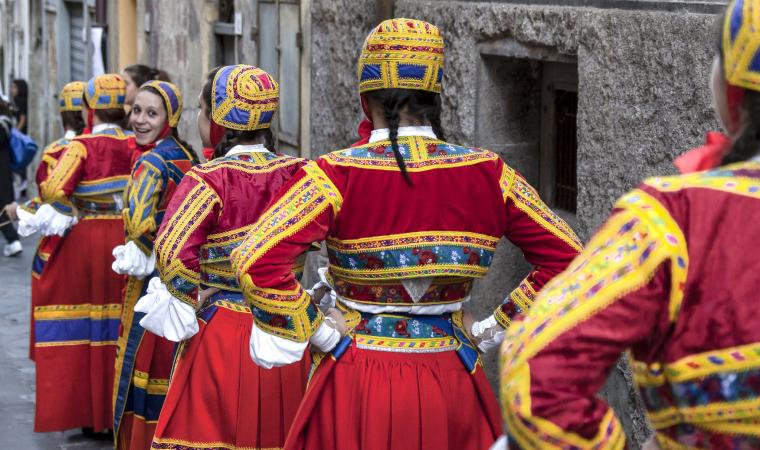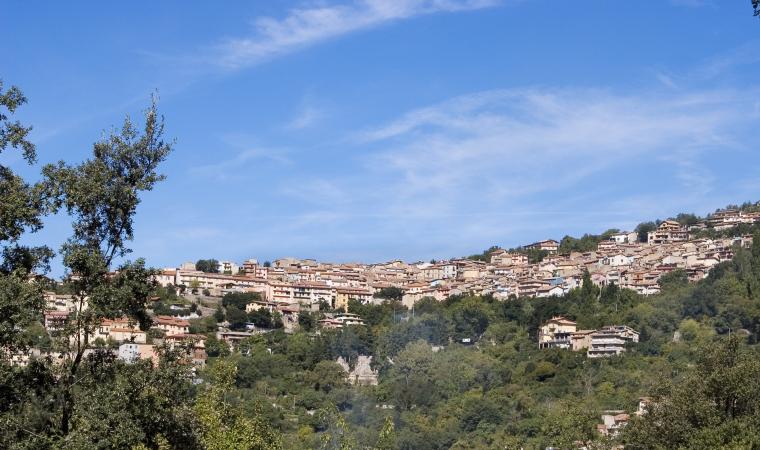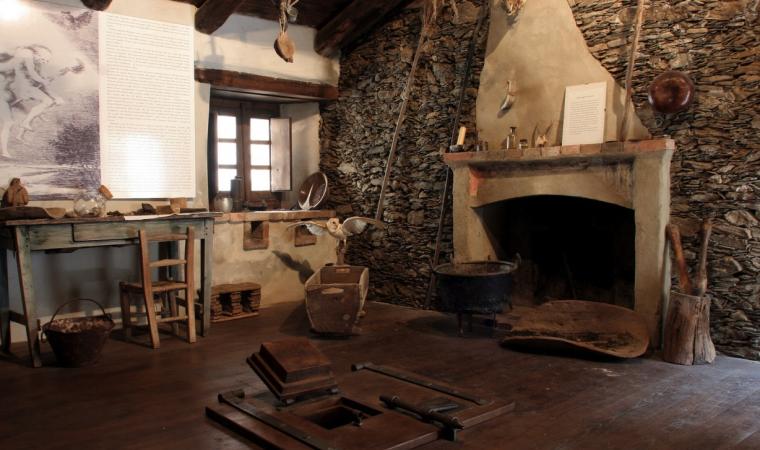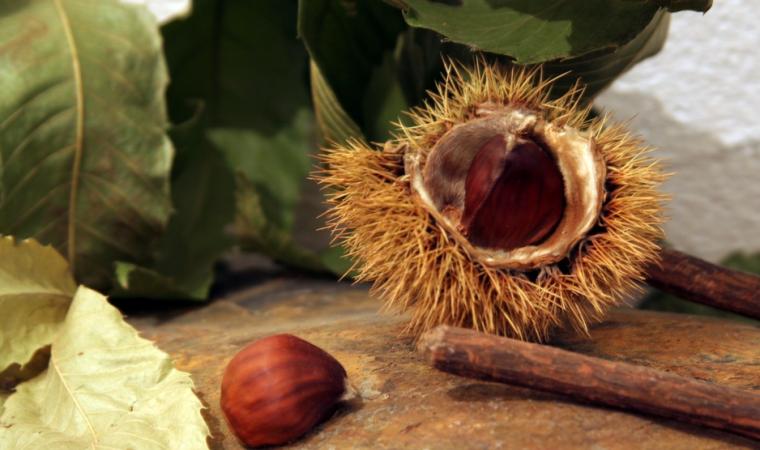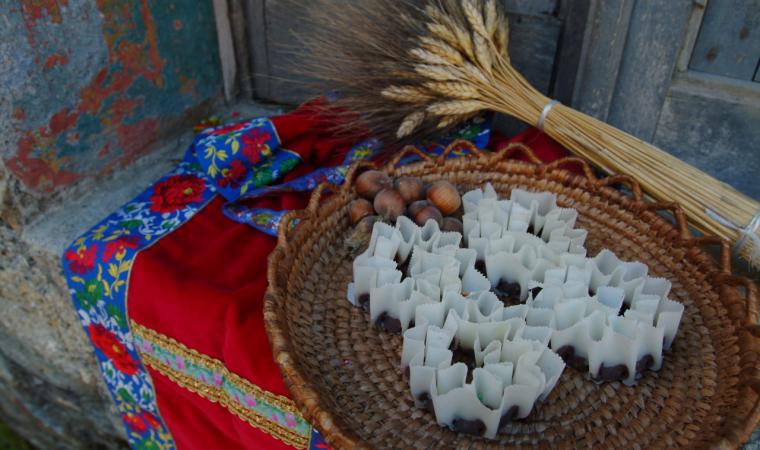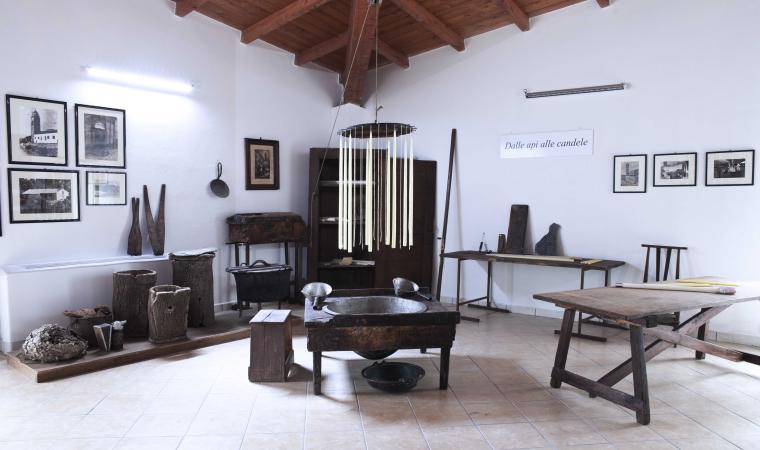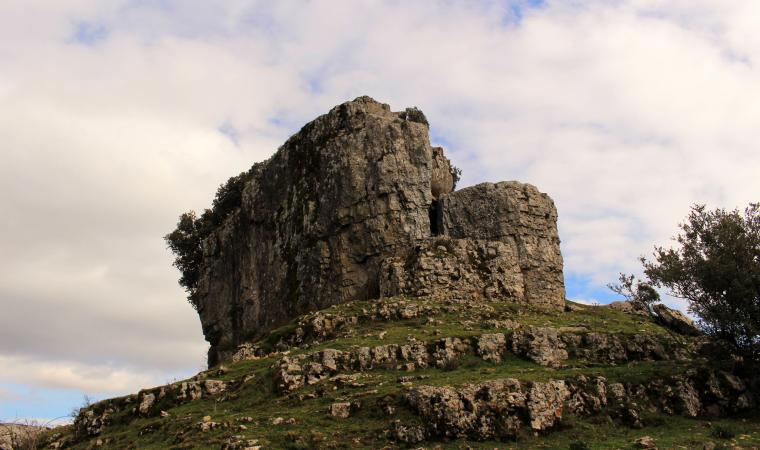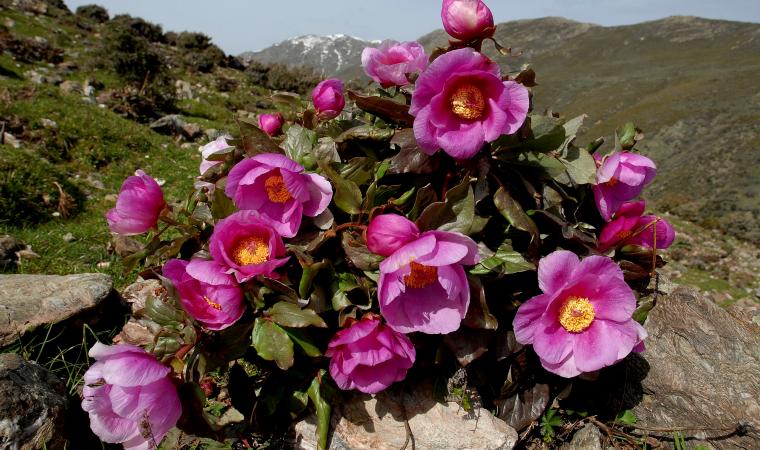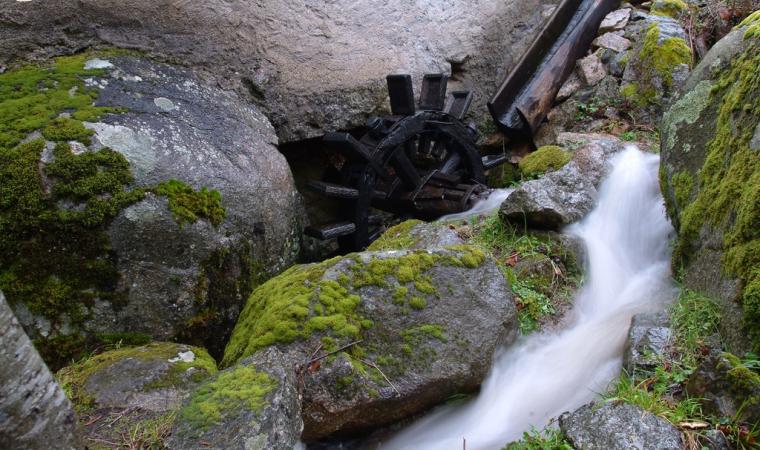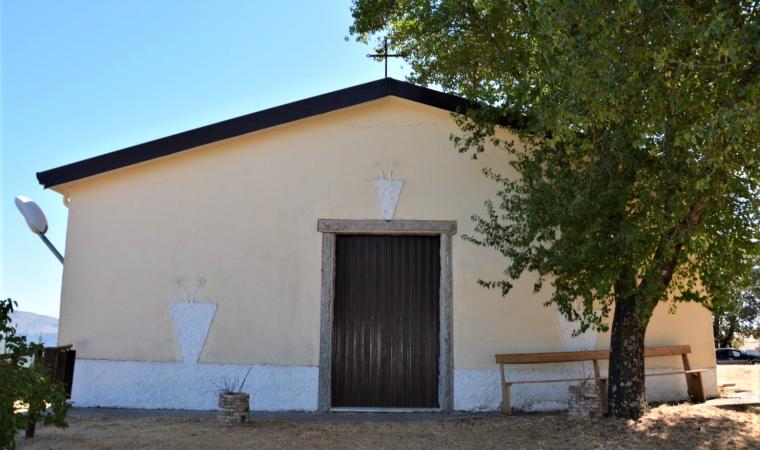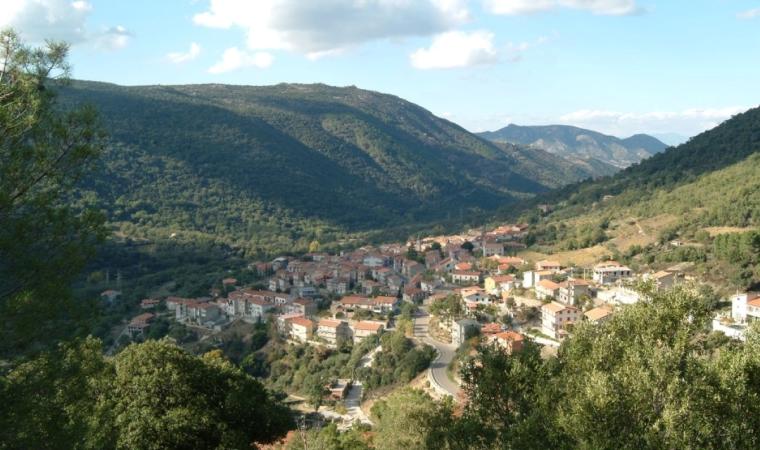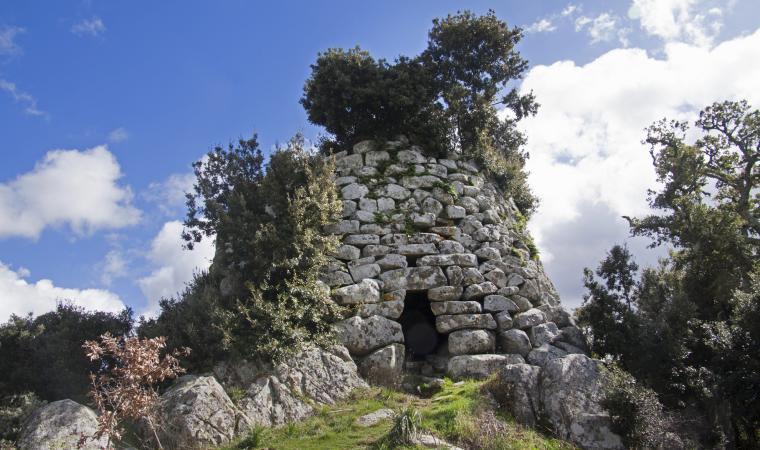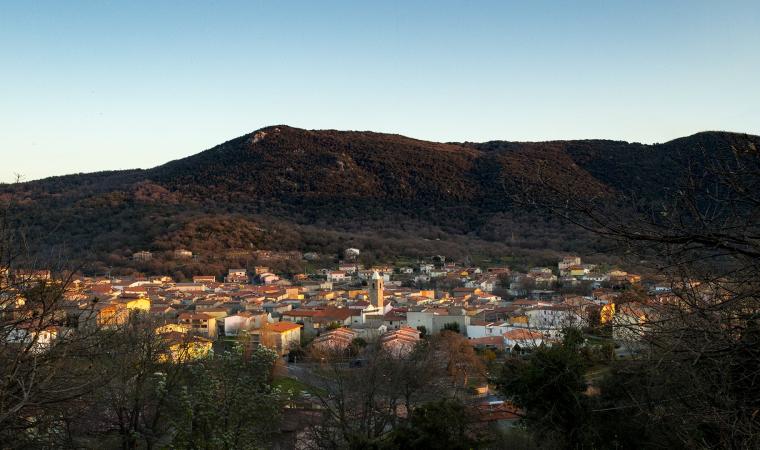An ancient village perched at an altitude of almost 900m on the western slope of Gennargentu. At Desulo you can enjoy the beauty of nature and a wide array of centuries-old traditions. The woods that circle town provide gorgeous scenery, colours that change with the seasons and a variety of fine hiking trails. Houses built with local shale, graced with doors and windows painted blue, line the narrow streets of the centre and offer timeless views. The town is made up of three neighbourhoods: Issiria, Ovolaccio and Asuai, home to some 2,400 residents. Here you will see the elegant traditional dress, embroidered precious fabrics like velvet, damask and scarlatto (a red woollen felt). The colours of this town are bright. Tradition dictates the red, blue and yellow that represent the three regions of the Barbagia (Ollollai, Belvì and Seulo).
When you are here you must go see the Carta house-museum, and the museum of Antioco Casula, the renowned XX century Sardinian poet, which houses the ethnographic museum of Monatanaru. The displays here include traditional dress, old farming tools and the poet’s own library. A yearly literary award named after him is handed out during the ‘La Montagna Produce’ celebration, the town’s Autunno in Barbagia event in late October, early November. During the celebrations you can admire fine craftsmanship, especially wood, and enjoy tasty local delicacies. The most artistically and architecturally interesting of the religious buildings is the ancient Church of Sant’Antonio Abate, the town’s patron saint. He is celebrated in mid-January when huge bonfires are lit in his honour. A few days later, more bonfires are lit to celebrate San Sebastiano, the patron saint of the Asuai district, a ritual that also plays out in July. Another summer celebration takes place in August, with the Madonnina delle Nevi festival at the Tascusì Pass, the highest point (1250m) of any road in Sardinia. The tallest peaks of the island are reached from here: Bruncu Spina (1829m) and punta La Marmora (1834m). Along your way you will come across a refuge named after General Lamarmora, who wrote about his travels in the XIX century. You will come across pristine forests like Girgini, and be able to admire a splendid rocky outcrop known as Genna Eragas. The views of the sea from these lofty peaks are breathtaking. In the area around Desulo you will find traces of settlements dating to the Neolithic era, like the domus de Janas shrine at Occile, from the Nuragic Age. Near town is Ura de sole, Sardinia’s highest nuraghe (1330m) and the Tomb of the Giants known as sa Sedda ‘e s’Ena.

